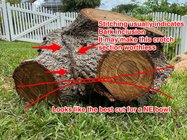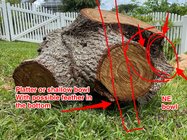We recently had a live oak tree in our yard that died. Since it had to come down, I've saved anything that was larger than about 12-14" in diameter, so I now have several decent sized half-logs that been end grain sealed and I will turn them as I get the chance. The sapwood looks to have some great figure in it (see last pic below), so I'm looking forward to turning it ... although I'm NOT looking forward to LIFTING it: that wood is HEAVY!
One section I haven't yet split, however. About 6 feet off the ground, the tree divided into 5 branches. I've used anchor seal on all the end grain, but have not yet cut it into sections because I have no idea how best to split it. With a "regular" crotch, I'd split it along a line between the pith of each limb. But with 5???? Needless to say, they are NOT in the same plane. I'll post some pictures below. Two of the limbs were cut off together - in the photos, the cut on top of the log shows two piths. The crotch section is 32" long by 32" wide (widest point). The base is 19" across, and each limb was between 9 and 12 inches wide. If anyone has suggestions on approaches to splitting it to best show off the crotch grain, I'd be very appreciative!
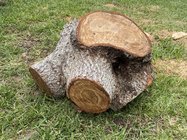
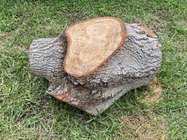

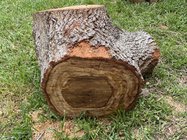
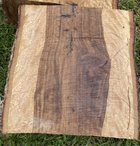
Thanks in advance!
One section I haven't yet split, however. About 6 feet off the ground, the tree divided into 5 branches. I've used anchor seal on all the end grain, but have not yet cut it into sections because I have no idea how best to split it. With a "regular" crotch, I'd split it along a line between the pith of each limb. But with 5???? Needless to say, they are NOT in the same plane. I'll post some pictures below. Two of the limbs were cut off together - in the photos, the cut on top of the log shows two piths. The crotch section is 32" long by 32" wide (widest point). The base is 19" across, and each limb was between 9 and 12 inches wide. If anyone has suggestions on approaches to splitting it to best show off the crotch grain, I'd be very appreciative!





Thanks in advance!

